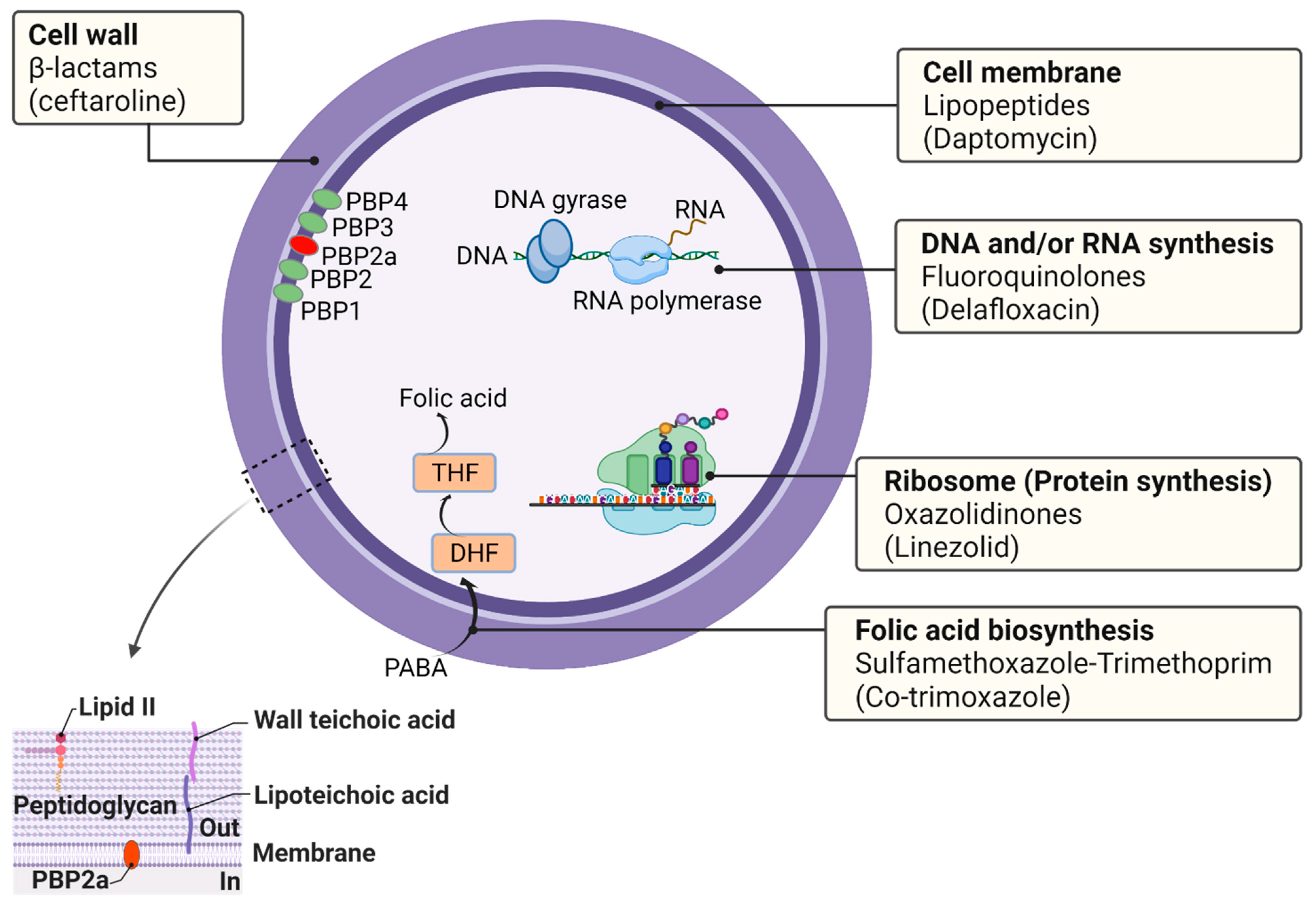Which of the Following Antimicrobials Does Not Inhibit Dna Synthesis
Fluoroquinolones inhibit DNA gyrase by interfering with the DNA cleavageresealing function of the enzyme. What type of chemical will allow some bacteria to be resistant to many penicillins.

Antibiotics Free Full Text Bacterial Targets Of Antibiotics In Methicillin Resistant Staphylococcus Aureus Html
Penicillin prevents the bacteria from synthesizing peptidoglycan a molecule in the cell wall that provides the wall with the strength it needs to survive in the human body.

. B prevent peptide bond formation. The cellular basis for bacterial resistance to antimicrobials include. This is because A.
So in contrast to the rifamycins which inhibit transcription of DNA into RNA the quinolones and fluoroquinolones inhibit DNA replication. 28 _____ A It lessens the toxicity of individual drugs. Gram-positive bacteria in which the glucose-6-phosphate transport system is poorly developed do not take up these drugs in concentrations adequate to inhibit the cell wall synthesis.
The antibiotic chloramphenicol Binds to the 50s subunit of the ribosome as shown in figure 203. Which antimicrobial does not interfere with protein synthesis. Destroy the cell membrane Block transcription translation inhibit DNA synthesis Block penetration Block maturation QUESTIONS Which antimicrobial drug group does NOT interfere with protein synthesis.
All the choices are correct. A prevent attachment of tRNA. The effect is to.
Drugs that insert on the _____ ribosomal subunit prevent peptide bond formation or inhibit translocation of the subunit during translation. C Azoles inhibit plasma membrane synthesis. 28 Which of the following does NOT constitute an advantage of using two antibiotics together.
E Azoles inhibit plasma membrane synthesis. Development of resistance to the drug. Which of the following antimicrobials does not inhibit DNA synthesis.
Trimethroprim A ratio of the dose of the drug that is toxic to humans versus the minimum effective dose for that pathogen is assessed to predict the potential for toxic drug reactions. The following antibiotics bind to the 30S subunit of the ribosome thus inhibiting protein synthesis. D Interferon inhibits glycolysis.
The drug greatly weakens the cell wall and causes bacteria to die allowing a person to recover from a. D Amantadine inhibits the release of viral nucleic acid. B Two are always twice as effective as one.
D It may be transferred from one bacterium to another during conjugation. Things Question asked which of the following antimicrobials inhibits the activity of DNA Javaris. C Amantadine inhibits the release of viral nucleic acid.
Sulfonamides and other drugs that inhibit folic acid synthesis have a high therapeutic index because A. Which drug inhibit the RNA DNA synthesis. Bacterial cell walls have a unique structure not found in eukaryotic host cells.
DNA gyrase has long been known as an attractive target for antibacterial drugs 15. E Fluoroquinolone inhibits DNA synthesis. Fosfomycin and fosmidomycin which inhibit cell wall synthesis enter bacteria by means of a glycerol-phosphate or glucose-6-phosphate transport system.
Bacterial cell wall synthesis is easily inhibited whereas eukaryotic cell wall synthesis is. All of the choices inhibit protein synthesis. E prevent polypeptide formation in eukaryotes.
Drugs in this family such as nalidixic acid ciprofloxacin and norfloxacin work by inhibiting enzymes that are required for bacterial DNA synthesis. The _____ are drugs that deposit in developing teeth and cause a permanent brown discoloration. So the anti microbial that will inhibit its activity will be now that dick sick.
Which antimicrobial does not inhibit cell wall synthesis. B Acyclovir inhibits DNA synthesis. It may be due to increased uptake of a drug.
Side effects that occur in patients tissues while on antimicrobial drugs include all the following except. All of the choices are correct. The most selective antibacterial agents are those that interfere with bacterial cell wall synthesis.
None of these are correct. N a healer case on zips our double stranded DNA And it is a part of the topo I summaries complex. 24 Which of the following statements is FALSE.
A Fluoroquinolone inhibits DNA synthesis. Ampicillin amoxicillin mezlocillin and penicillin G all have. Aminoglycoside antibiotics such as.
So we know that DNA gyros is extremely important because it relieves the tension that builds up while the d. Humans do not use folic acid. The drug that can cause injury to red blood cells and white blood cells is chloramphenicol.
Two classes of antibiotics have clinically validated DNA gyrase as a viable targetquinolones and aminocoumarins. Which drug is used to treat cases of tuberculosis. Humans do not synthesize folic acid but obtain it in their diets.
E It may be due to enzymes that degrade some antibiotics. Which of the following is NOT a mode of action for antiviral drugs. Sulfonamides are analogs of PABA and as a result they inhibit _____ synthesis.
24 Which of the following statements is FALSE. Which antimicrobial does not inhibit cell wall synthesis. A Interferon inhibits glycolysis.
Which two antibiotics affect the DNA and RNA of bacteria. Microbial resistance resulting from mutation occurs because. Humans synthesize folic acid by a process that is not sensitive to sulfonamides.
D stop ribosome from moving along the mRNA. B Acyclovir inhibits DNA synthesis.

Mechanisms Of Antibacterial Drugs Microbiology

No comments for "Which of the Following Antimicrobials Does Not Inhibit Dna Synthesis"
Post a Comment